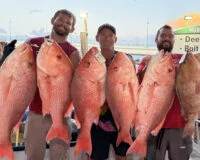Inshore Fishing Report







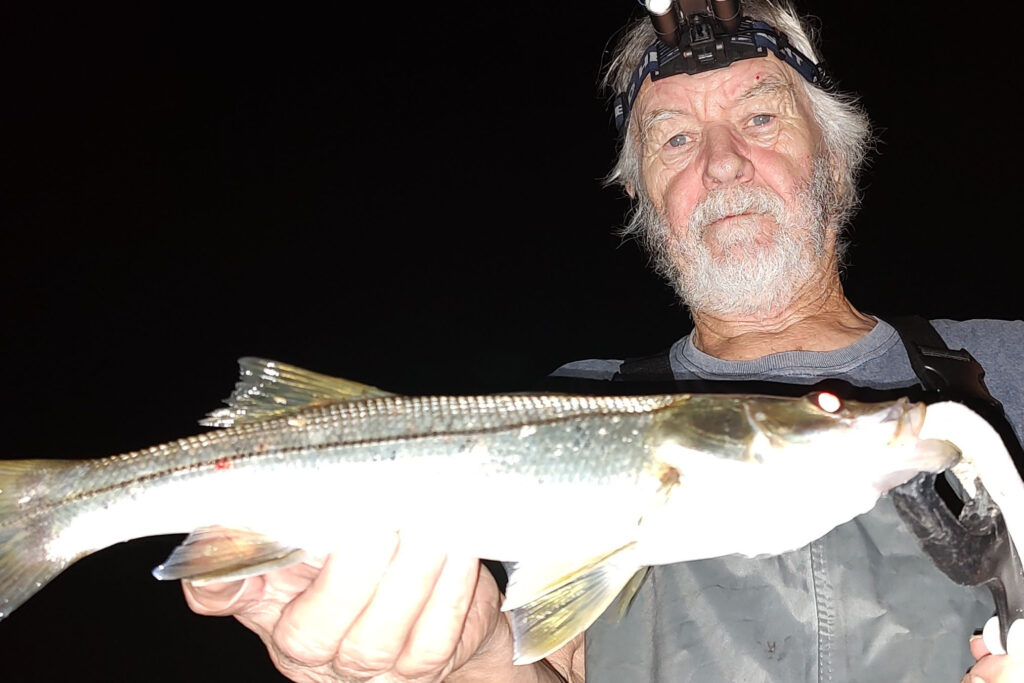
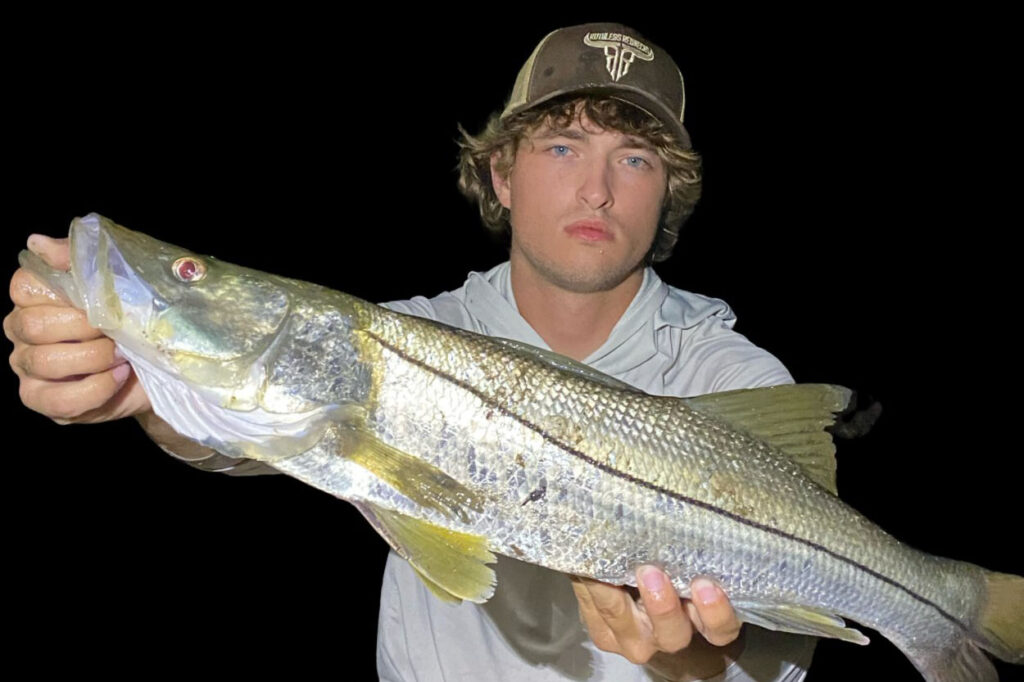
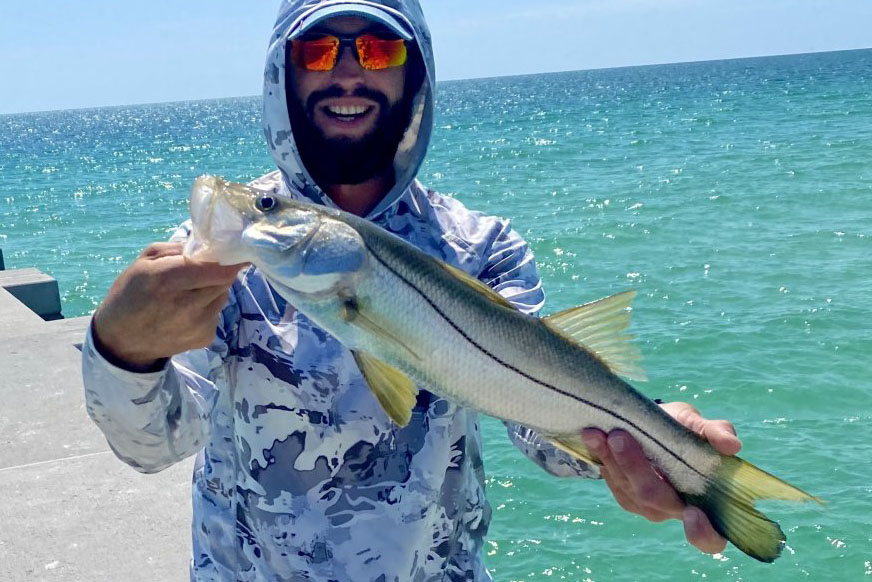
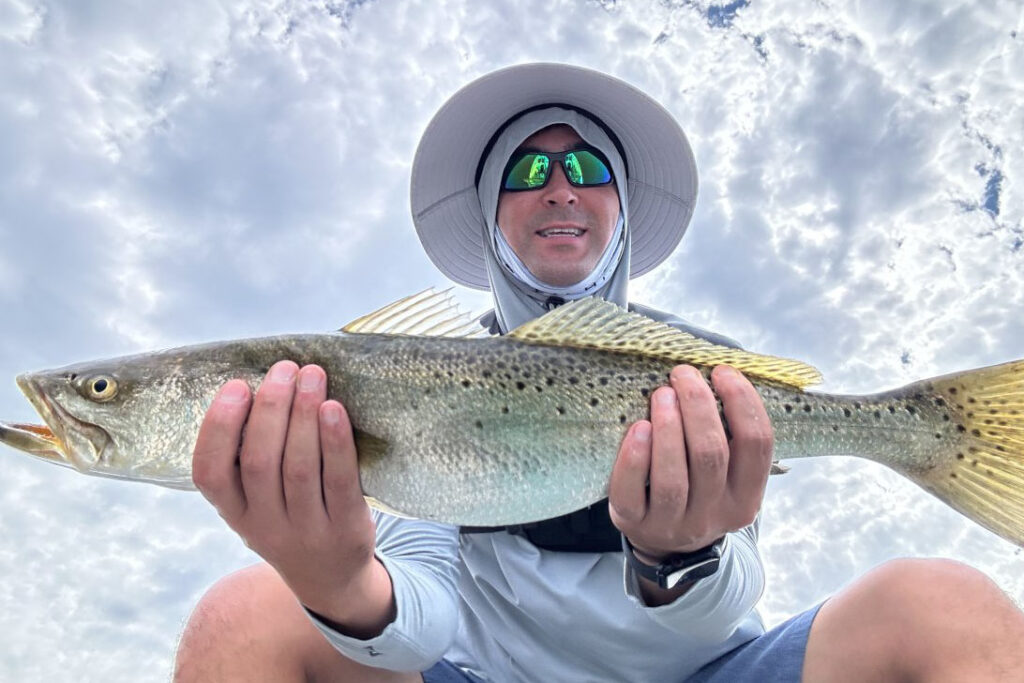



Snook action is going well around the area and we are seeing quite a few out on the beaches and around the pass. However, they are most active early in the morning prior to the sunrise and throughout the night. Once the sun comes up they recede to the depths more and more. They are definitely more lethargic and less active during the day. Dead bait on the bottom is better once they slow down, while at night and in the shade they are more active and more likely to go after live bait.
Redfish action like the snook is most available early morning, by mid day the bite slows and things get more tough until the sun starts to recede more and lets the shade grow. We are seeing them around the mangroves in decent concentrations, but they are staying tight to the mangroves and tucking high into the trees come higher tides.
Trout action is best at night around dock lights and bridge lights, but during the day we are finding them on the deeper flats, edges, and potholes.
Pompano are very hit and miss, but a few are caught sporadically along the pass, bridge and jetty! They love the pompano jigs, and our new jyg pro micro jigs. They also take the live shrimp on the bottom too.
Black drum are really picking up as water warms, most any big dock structure or bridge will be holding some fat black drum around if you soak some big dead crabs or big shrimp.
Tarpon are thick around the passes, on the beaches and around the bay! They are starting to hunt some crabs, but they tend to key in more on the crabs once the rain kicks up. Outside of crabs squirrelfish are a great options for drifting a pass or the mouth of the bay, but the threadfins are the go to tried and true option.
Help spread the word about what to do if you hook or entangle a bird. Never cut the line; instead, reel in the bird carefully to dehook and release it. If you accidentally hook a dock, break the line at the hook to avoid leaving any line in the water. Seabirds with fishing lines hanging from them are becoming more common, and this could lead to the closure of fishing areas.
Rising concerns about bird entanglements might result in closing fishing spots, impacting the few available locations around Tampa Bay from shorelines, docks, bridges, or piers. Learn more in our recent podcast with Salt Strong: https://www.saltstrong.com/articles/shutting-down-fishing-at-busy-pier/.
Nearshore Fishing Report
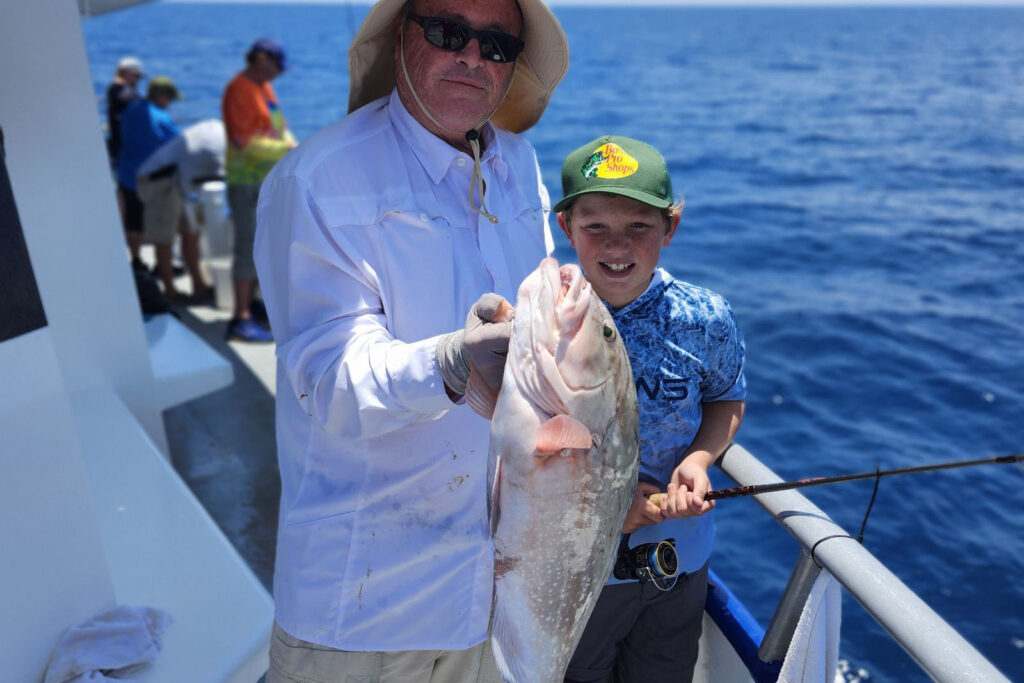




Things near shore are staying similar, we are seeing some lanes, mangroves and the occasional big red grouper fishing on the ten hour all day around that 80-100ft range. However, the grass has become an issue that we run into annually near shore. If you get to an area and drop down and find it a little slow, likely your running into an area heavy with some grass. We generally will adjust depths by a few feet or run a few miles to get out of that grassy area and fishing will generally pick right back up.
Lane snapper are great eating fish we find as shallow as around 50-60ft but they get bigger and more prolific as we get deeper. They will bite just about anything we put down but the big ones like cut threadfin and shrimp. The squid will get you more action and plenty of lane snapper too.
Mangrove snapper are around near shore and we are seeing some big ones biting on the pinfish deep near shore. We are also getting them on the cut threadfin and sometimes the shrimp too. Shrimp is a great option to target the nice lanes and the mangrove snapper too.
Red grouper fishing is going well on the ten hours, but we are finding quite a few one day and then struggling to get great numbers the next. Very hit and miss on the grouper, but on average we are seeing 5-10 or more. Some days we see 20+ but that isn’t an every trip type occurrence. Typically, we are finding them on the live pinfish, grunts, or lizard fish. We also see them on big dead baits like the plugged porgy.
Offshore Fishing Report














- Red grouper are open until end of June
- Triggerfish are open all year EXCEPT June & July
- Amberjack are open May, September & October
- Red snapper are open June 1st – August 27th
- Gags will open September first for 1,2 or maybe 3 wks (we will know end of June)
**all other species are open all year**
We are pumped up for red snapper season kicking off, but they are stupid fish that will bite just about anything you put down… if your deep enough fishing the right shows it doesn’t matter what bait or tackle you drop or even how experienced you are, you will catch plenty of red snapper.
If you want bigger red snapper, I would strongly recommend thinking about selectivity… this means, when in an area targeting red snapper use heavy leader, big hooks and BIG dead baits or live baits to ensure you are only going to get the BIG red snapper and let the smaller ones swim past your baits and hit someone else whos fishing lighter tackle and smaller baits.
Remember, you don’t want to be the one high grading unethically offshore, meaning, if you catch a legal fish that legal and in season its most recommended you keep it. However, since your only allowed a few red snapper folks will try and high grade by throwing back the smaller red snapper hoping to get a bigger fish. While this isn’t necessarily illegal its just not good for the fish or ethical as you are catching and releasing fish that have a mortality rate, so you are often going to be killing fish that don’t need to be killed.
In order to avoid this, and not get into that ethical dilemma, use the selectivity to avoid the smaller fish by dropping big baits and on big tackle!
Remember that when fishing in deeper nearshore and offshore federal waters, the Descend Act requires you to have a descending device or venting tool “rigged and ready.” If you know how to use a venting tool, keep it prepared. If not, here’s some helpful advice: https://bit.ly/3L5HTnv. Using a descending device is straightforward and doesn’t require as much precision or practice as venting. You can even get over $100 worth of descending device gear for free by taking a short course on barotrauma mitigation, which helps more fish survive. The course only takes about 10-15 minutes, and you can learn valuable techniques to protect our offshore fishery. Spread the word by visiting: https://returnemright.org/.
TERMS OF REFERENCE-
Inshore: This covers the areas from the inner bays, through the bridges, and right up to the beaches.
Near Shore: This includes the coastal waters from the beaches up to twenty miles offshore, or up to a depth of 100 feet.
Offshore: This extends from twenty miles offshore or from a depth of 100 feet and beyond.
For more fishing reports, photos, videos, and other content, check out Hubbard’s Marina on Facebook, Instagram, YouTube, TikTok, Twitter, Pinterest, or Snapchat by searching for @HubbardsMarina. Remember our family motto: “If you’re too busy to go fishing, you’re just too busy!” Thank you for reading our report.
Capt. Dylan Hubbard, Hubbard’s Marina
Phone or text: (727) 393-1947
Website: Hubbard’s Marina



